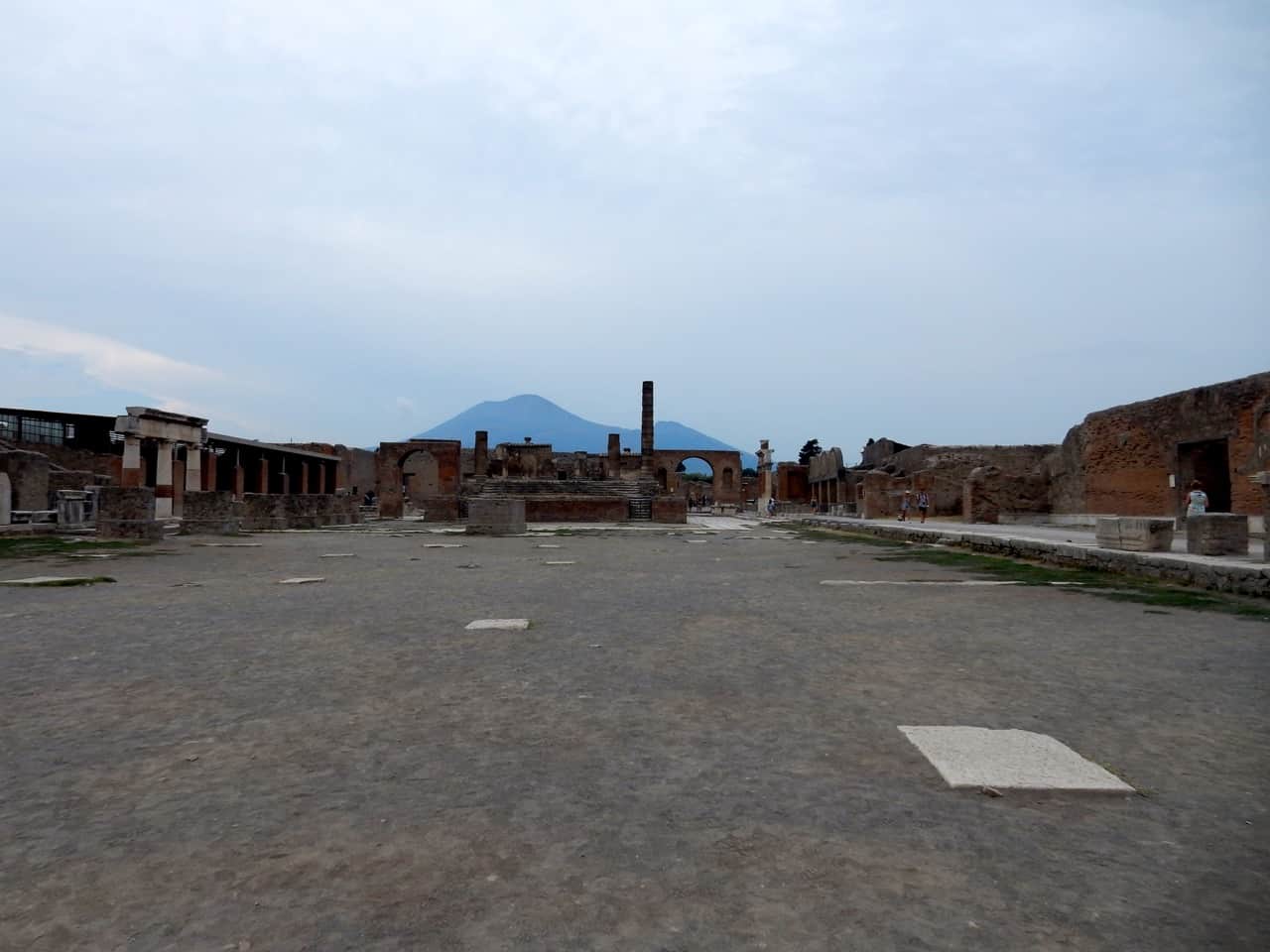Every once in a while, when travelling, you will come upon the world’s brutally evocative places. Places where horrible events have unfolded, where nature has gone amok (Mt Vesuvius on 24 August 79) –
23 August: a wealthy, thriving Roman town. 24 August: a town and 2,000 people buried in ashes (culprit in the background)
– or, more often, where people have behaved despicably.
The Nazi concentration camps belong in this category. As do the Soviet gulags, the Stasi prison in Berlin, and the Killing Fields in Cambodia.
My own country has not been spared such horrors either. 13 years ago, a raging racist went on a rampage on a small island in Norway, murdering kids on a summer camp.
In 1995, another raging madman murdered 149 federal employees and 19 children in Oklahoma City.
The Field of Empty Chairs in Oklahoma City
Some are lesser known, such as the former KGB HQ in Vilnius – and in cities all around the former Soviet Union, where dissidents, and sometimes their families and friends, were tortured and murdered.
In the once hermetically sealed country of Albania, behind the doors of a deceptively peaceful old building on a leafy street in Tirana, people were interrogated and tortured by the Sigurimi, the secret police.
House of Leaves, Tirana
One that speaks softly, but no less horrifyingly, is the secret hiding place of Anne Frank and her family in Amsterdam. Wandering past the house on Prinsengracht 263, trying to understand the sense of fear that must have pervaded those rooms on the top floor, my imagination falls short.
A little less difficult to imagine, are the horrors which took place behind the doors of the youth re-education centre in Torgau, right up until the very end of the last century. Maybe that is because this happened during my lifetime. While I was in school home in Norway, just a 1-hour flight south, kids were brutally ‘disciplined’. The 80s/90s hairstyles in the photos bring it close to home.
More than 4000 ‘difficult’ teenagers were abused by the state in East Germany’s youth re-education centres
Nelson Mandela’s plain prison cell on Robben Island speaks of human cruelty, as does the House of Slaves on Île de Gorée in Senegal. For 400 years, the little island was Africa’s largest centre for trade of enslaved people, with hundreds of thousands passing through the Door of No Return, on the way to the Americas.
Now, there is some doubt about the actual numbers. Some researches claim the slave trade here was on a much smaller scale than in e.g. Benin and Guinea. Be that as it may. At the very least, Gorée Island serves as a powerful symbol of a very dark period in human history.
The Door of No Return at Île de Gorée
On the other side of the Atlantic, the many plantations in the southern USA is an equally brutal reminder. Perhaps even more so. Hiding behind beautiful houses, were chains, subjugation and cruelty.
And have we learnt? Apparently not. Just now, Ukrainians and Palestinians are both living in the middle of full-scale aggression, as hostile neighbours bomb their homes and murder their children.
In Western Ukraine, Lviv is a little on the outskirts of the worst of it. But the threat of attack is still hanging over its head. It is touching to see people do their best to continue living their daily lives. As they must, of course – but it is none the less brave.
Monuments wrapped for protection from bombs in Lviv
Why do we visit these places? And should we?
Why do we visit the dark places? We have discussed this before here on Sophie’s World. If you follow this little blog, you already know my view. For me, at least, reading about it is not enough. Horrible as it is, it is important to see for myself. It is how I learn how the world works, however uncomfortable that makes me. It makes me stop and think. And it helps me remember my fellow humans who suffered just there, and pay tribute to them.
In the evocative Museo de la Memoria y los Derechos Humanos (Museum of Memory and Human Rights) in Santiago, we remember all those who were repressed, tortured and murdered under Augusto Pinochet’s monstrous military dictatorship.
Victims of Chile’s 17-year long military dictatorship (1973 and 1990)
By learning, by seeing for myself, and by talking about it, perhaps I can contribute to drag cruelty out of the dark, secretive corners it hides in (or haul it out from the forgotten) – and into the light. And although it unfortunately will not shrivel up in daylight, perhaps I can somehow play a part, however tiny, in a constructive way. Because sadly, atrocities still happen.
